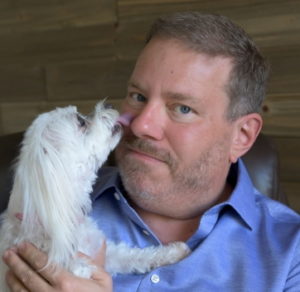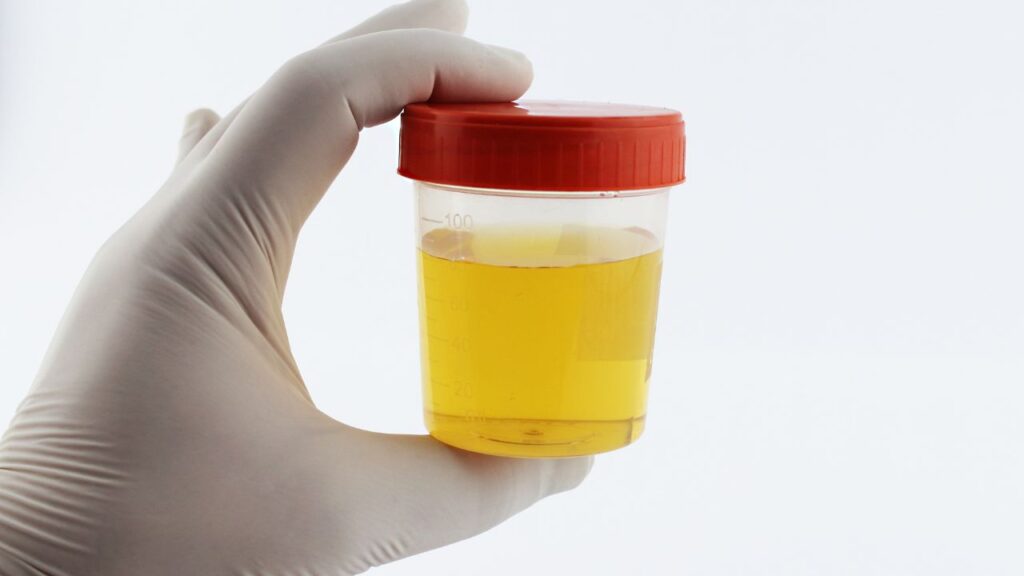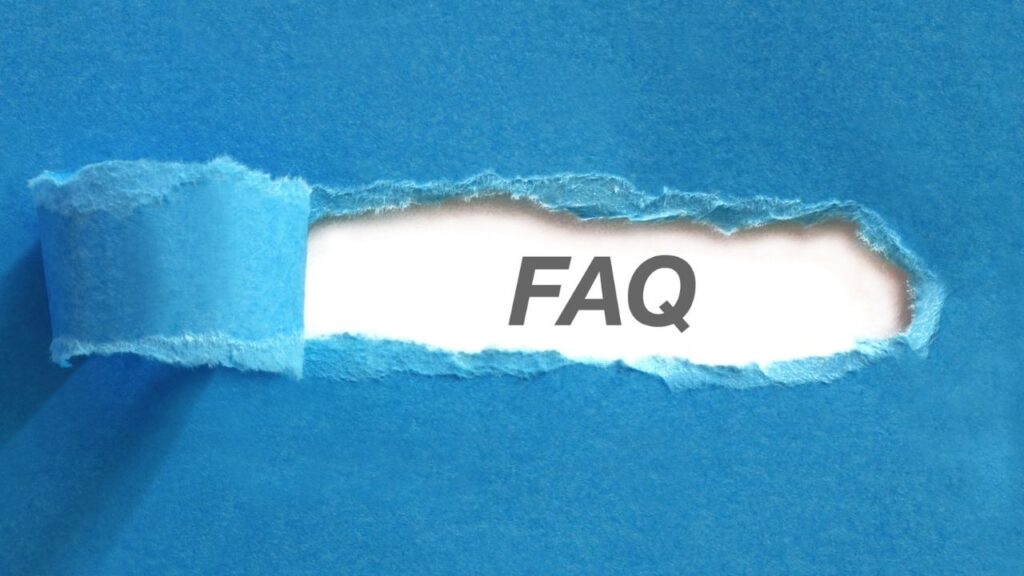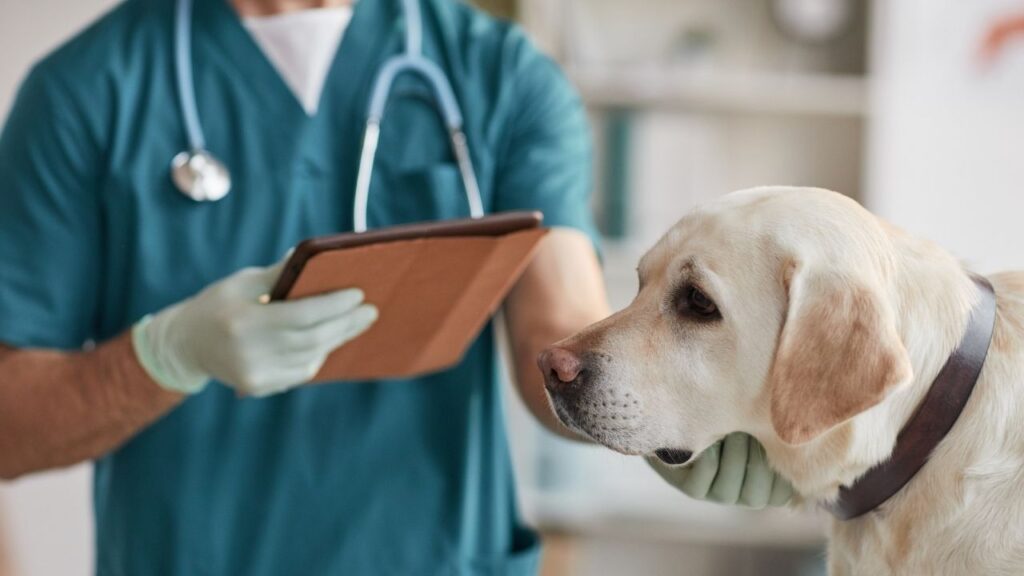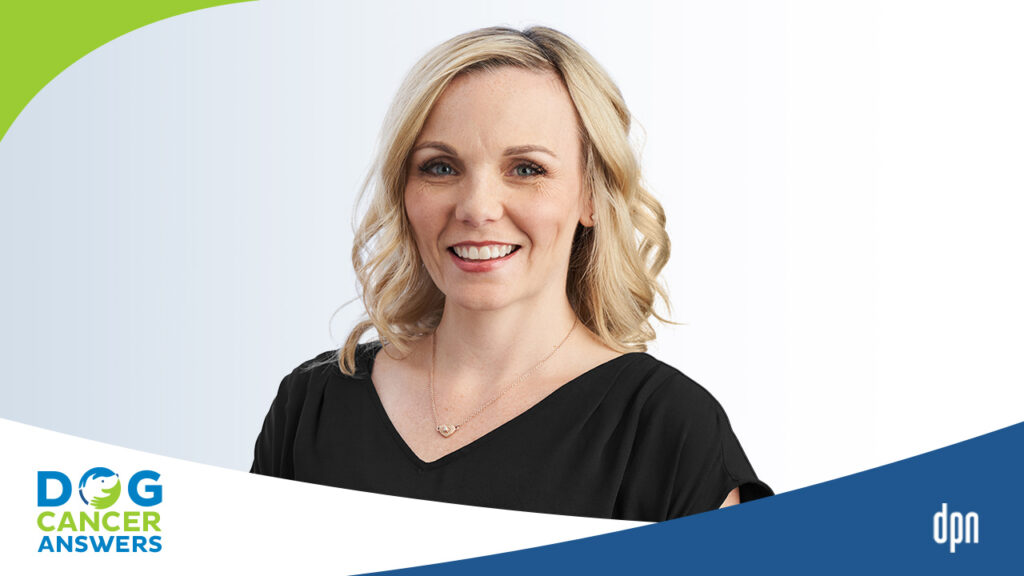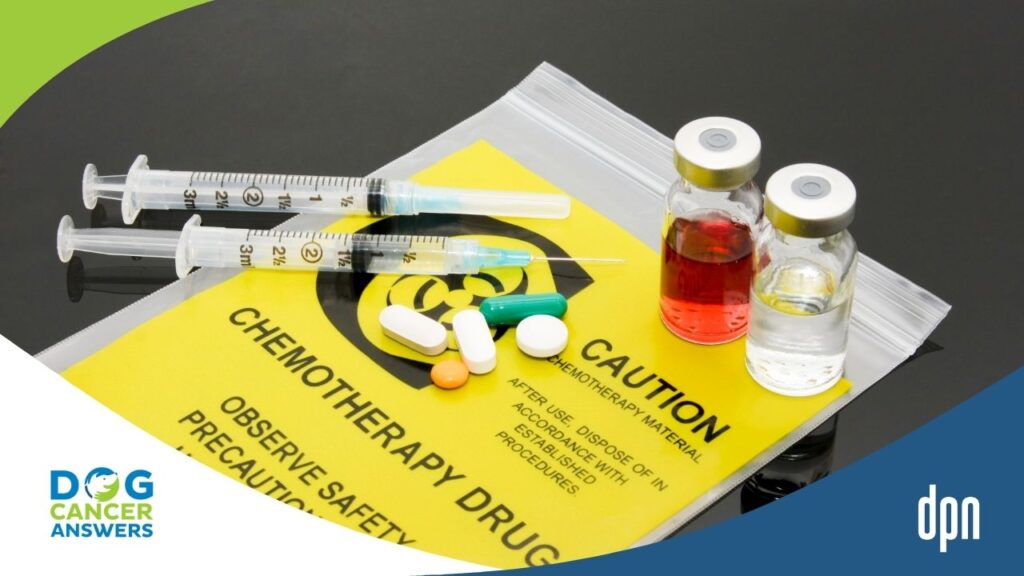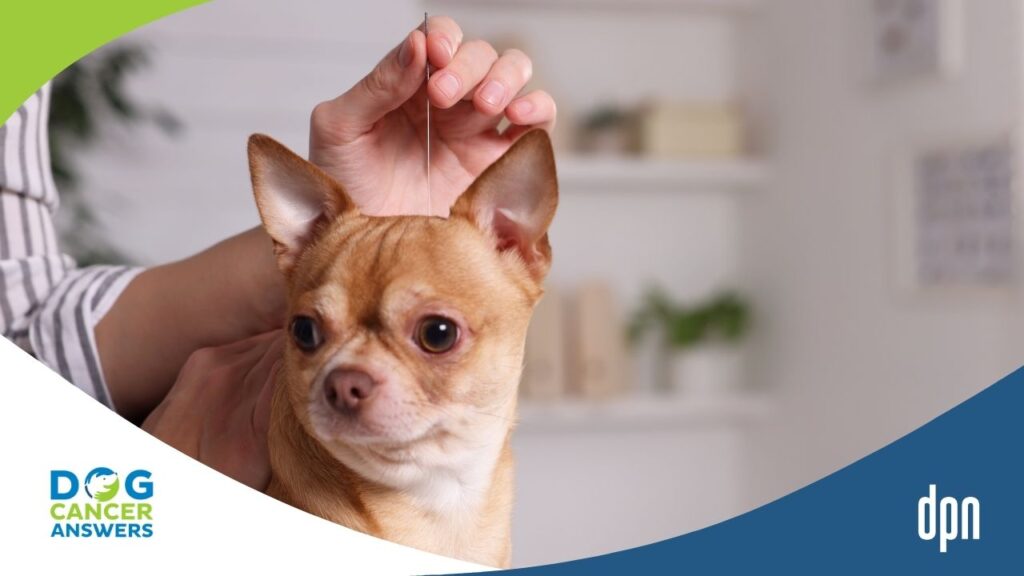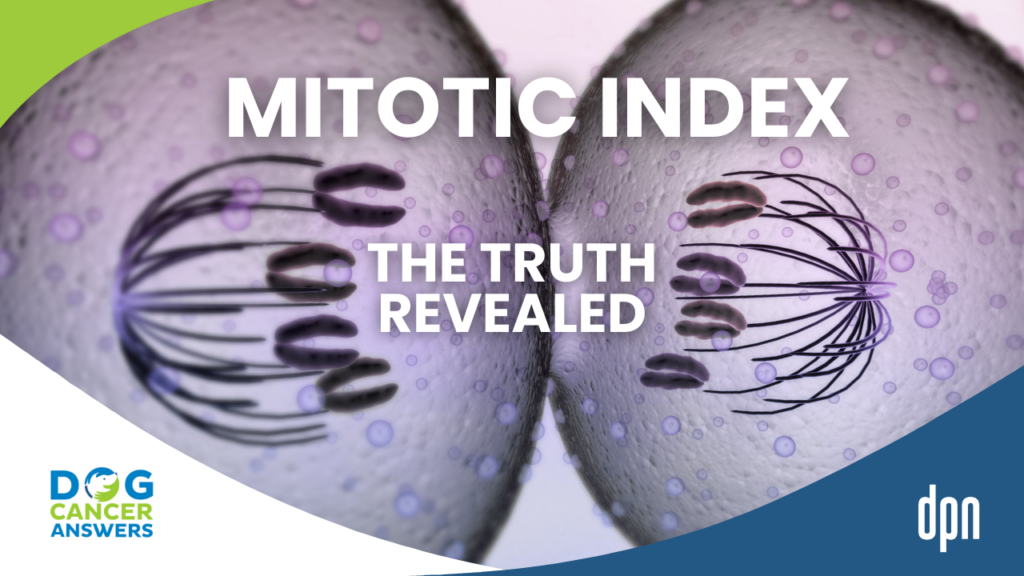EPISODE 238 | RELEASED February 5, 2024
Early Dog Cancer Detection with Urine-Sniffing Worms | Dr. Page Wages & Chan Namgong
Worms are helping screen dogs for cancer by sniffing their urine. Could this new screening method help catch dog cancer early?
SHOW NOTES
A company in Raleigh, North Carolina, is using worms to sniff dog urine for cancer metabolites. It’s a simple, non-invasive, relatively inexpensive way to screen for cancer. Could this test catch cancer early enough to make a dent in the number of dogs who succumb to their #1 killer?
Six to ten million dogs are diagnosed with cancer every year in the U.S. alone, and veterinarians think half of those cases could be treated and cured if caught early. But our canine companions are naturally stoic, so we don’t often get it early enough. If early detection methods were available and less expensive, it would help us catch cancer earlier. And that might save millions of dogs every year from their deadliest illness.
Imaging tests like ultrasound, x-ray, and MRI are expensive and invasive. Few dog lovers can afford to engage them routinely once a dog hits their senior years at age seven.
Oncotect’s promise is that their urine test, which costs much less and involves a simple urine catch, will help find dog cancer early. Once they receive the urine in their lab, the company uses C. elegans nematodes, tiny little worms, to “sniff” the urine. Their behavior helps discern whether cancer by-products are present in the urine sample.
We are joined today by Oncotect CEO and founder, Chan Namgong. Also, Dr. Page Wages, a Raleigh-area veterinarian who has been using Oncotect for years with hundreds of patients and says this urine test has changed the way she screens for cancer.
Join our Facebook support group at https://facebook.com/groups/dogcancersupport
Call +1 808-868-3200 to leave a question on our Listener Line for a future show!
Related Links:
Oncotect website: https://oncotect.co/
>> James Jacobson: [00:00:00] If we could just find dog cancer early enough, almost 50 percent of all cancers could be cured. That’s right, cured, and that’s according to the Veterinary Cancer Society. But how do we detect cancer early enough? Well, what if a microscopic worm could sniff a sample of urine from your dog and reveal the presence of cancer before there are any apparent signs.
>> Announcer: Welcome to Dog Cancer Answers, where we help you help your dog with cancer.
>> James Jacobson: Hello friend, today we delve into a fascinating topic at the intersection of biology and veterinary medicine. We’re talking about a tiny worm that may have huge potential in cancer detection.
A microscopic roundworm called caenorhabditis elegans. Well, I probably just butchered that pronunciation. No wonder that this little worm is usually known by its first initial [00:01:00] only C, as in C. elegans. C. elegans is known for its simplicity. and usefulness in scientific studies. So what does this tiny nematode, basically a tiny worm, have to do with cancer detection?
Well, here is the theory being researched. C. elegans have a highly sensitive olfactory system capable of sniffing out specific chemical signals. The fancy scientific name for this movement towards chemicals is chemotaxis. Researchers have found that C. elegans move towards cancer specific markers in urine samples.
The idea is simple. It’s that these tiny worms could show us that cancer metabolites are present in a urine sample simply by moving towards them. This dead simple method shows promise in detecting various cancers early, and that, of course, is a goal in cancer treatment, because early [00:02:00] detection results in better outcomes.
Now, this is emerging technology, so it’s important to approach it with cautious optimism. The published papers show a notable sensitivity and specificity of C. elegans in early cancer screening. But, there are still questions to be answered. Can these worms distinguish cancer from other conditions, like chronic inflammation or a urinary tract infection?
We haven’t seen the answers to that yet, and a company in Japan that has been using C. elegans to screen for human cancer early is facing some questions about its accuracy from that country’s incredibly skeptical medical establishment. But what about dogs? After all, this is Dog Cancer Answers. And there is nothing more that we want than a good, simple, easy to obtain, early screening test for dog cancer.
And a simple urine catch where you, you know, get a little bit of your dog’s pee. And [00:03:00] it doesn’t require refrigeration. Well, really, that couldn’t be easier for us dog lovers, right? Well, today, we are talking to two special guests who are using this simple urine test today, a test that includes urine and C. elegans to find dog cancer early.
First up, Dr. Page Wages, a veterinarian who says the new screening test, Oncotect, is changing the way that she practices medicine. It’s helping her find dog cancers early, sometimes, even before the dogs show any signs of cancer.
Then we’ll hear from Chan Namgong, the entrepreneur behind Oncotect. His enthusiasm and insights into the commercial and practical aspects of this technology are eye opening. As you listen to these interviews, remember that science is a field of exploration and constant learning. While C. elegans offer exciting possibilities, it’s part of a larger [00:04:00] puzzle in our ongoing battle against cancer. Research is ongoing, as I said, but the test is available today.
Is it the groundbreaking development that we’ve been hoping for? Stay tuned as we set out on a journey of discovery and cautious optimism. Let’s delve into our conversations. First up. Dr. Page Wages.
Dr. Page Wages. Thank you so much for being with us today.
>> Dr. Page Wages: Thanks for having me.
>> James Jacobson: So I know you live on a place that you call the Wages’ Funny Farm and you have a whole menagerie of dogs and turtles and peacocks and ducks and a bird may actually join us during this conversation, so that’s great. So one of the animals that is not on that list are worms, but you’re using them in your practice to detect cancer. Tell me about that.
>> Dr. Page Wages: It’s true. So we are using worms. I don’t use, well, that’s not true. I have dried worms that my chickens eat. So I do.
>> James Jacobson: Okay.
>> Dr. Page Wages: But.
>> James Jacobson: But not for dog [00:05:00] cancer.
>> Dr. Page Wages: No, no. No, no. But there is a new test that’s been developed by Oncotect that uses worms to detect cancer. And it’s for, they smell the gene, cancer genes and whatever is turned on is my understanding of the test.
So I am just a practitioner in the area that was approached by the company when they were first starting to see if they could use some of our samples of urine. And it’s, it’s in urine, which is pretty easy to catch, very easy to do. And we give them urine. It used to have to be frozen, and it doesn’t have to be anymore, and they feed it to their worms and then spit out whether or not we think the dog has cancer. So, it’s a pretty cool technology.
>> James Jacobson: And how many of your patients have you tested using this technology?
>> Dr. Page Wages: Oh, I don’t know. A lot. a lot. It’s been out for a couple of years, so we’ve been doing it since it came out pretty much. Right now it’s only in dogs [00:06:00] and so I generally will test anybody over the age of six or anybody that we’re worried might have cancer and we haven’t found it yet. So if there is any suspicion we’ll send the urine off or if it’s just an older dog as part of a regular wellness screen we just send it off.
>> James Jacobson: And so, I mean, a lot. Are we talking dozens? Hundreds?
>> Dr. Page Wages: Hundreds, probably.
>> James Jacobson: Wow. Okay.
>> Dr. Page Wages: Yeah.
>> James Jacobson: So, you’ve been described as an evangelist of this. You really like this?
>> Dr. Page Wages: Oh! Oh, no!
>> James Jacobson: Is that true?
>> Dr. Page Wages: I will definitely talk the test up to anybody. It has been an amazing game changer for me in practice, for sure. It has changed the way, you know, for us to be able to detect cancer so much earlier, it’s pretty awesome. It’s really neat to be able to be able to give that to our clients as an option.
>> James Jacobson: Are there some anecdotes or stories you’ve had with specific patients, clients who you were able to use this test with and then were able to detect cancer early and it turned out a lot better?
>> Dr. Page Wages: Yeah. I [00:07:00] mean, I can’t tell you the number of splenic masses that we didn’t know were there that the test picked up. So, you know.
>> James Jacobson: Hemangiosarcoma.
>> Dr. Page Wages: Well, they came back other ones too.
>> James Jacobson: Okay.
>> Dr. Page Wages: So the results, when they come back, you get low, moderate and high. And so the low ones, we don’t worry about. The moderate and the high ones we recommend doing an ultrasound of the abdomen and chest x-rays. And sometimes we find some things and sometimes we don’t.
But the majority of the ones that are moderate or high, or high moderate, have something. And so we’ve been able to screen those patients and find. a mass on the spleen and go in and take it out, get a biopsy on it. We’re done. Don’t have to worry about it. Or we’ve found some cancers in the chest that you never know are there until they’re a problem.
Or a couple of dogs had mast cell tumors that we didn’t know were there or coming. And then we’ve had a couple that had lymphoma and we didn’t know. So, if we can catch those cancers earlier and start treatment earlier, it will prolong the life of those patients.
>> James Jacobson: So do you sometimes just do, you said you do this with senior dogs, [00:08:00] so you’re doing this with dogs who, I mean, are just older. They’re not showing any signs that would indicate cancer.
>> Dr. Page Wages: Correct. So we’ll do it on dogs that we’re worried about because they’re losing weight or for some other reason or we do it as a general screening.
>> James Jacobson: I think that voice you heard was your bird, right?
>> Dr. Page Wages: That is the bird. She’s coming Warning.
>> James Jacobson: I believe, in Dog Podcast Network, this is a first. I love it.
>> Dr. Page Wages: I’m very sorry.
>> James Jacobson: No, it’s great. I think everyone who’s enjoying this podcast probably likes the idea that a bird is joining. So in terms of some of the the false positives or the you know, like that you’ve got And then, obviously, the corollary of that is a false negative, how do you address that?
>> Dr. Page Wages: We haven’t had a lot of false positives.
>> James Jacobson: Okay.
>> Dr. Page Wages: So the dogs that have tested positive, if we didn’t find something initially, it shows up within three to six months. So, those dogs, if we don’t find anything on the first scan, we’ll recommend redoing the testing in [00:09:00] three to six months, and see sometimes, and I’ve had a couple where I think a gene was turned on and then it turned back off, because we’ll do the urine screen again in three to six months and it’ll be low.
So there may have been something that was there and then it turned off.
>> James Jacobson: Your bird is mugging for the camera.
>> Dr. Page Wages: I’m very sorry.
>> James Jacobson: I, I think it’s just adorable. Uh, again, a first for DPN. And I love it. So on the dogs, you didn’t see anything for six months. And then, and then, I mean, what were your thoughts as a vet who’s like, I mean, what do you think when you see that? It’s like, you’re coming back with a test, and you don’t see anything, and then six months later, you do see cancer.
>> Dr. Page Wages: It’s just a conversation to have with the owners. Is that there’s, there may be something coming. And you know, it does put people on edge for a couple months. But again, if we can catch it early. The flip side is, if it’s high, we find cancer, we cut cancer out. We can use the test as a screen to see if it’s coming back. So those dogs will test negative if the cancer has been removed and not coming back.
>> James Jacobson: So if you have good margins and no [00:10:00] metastasis.
>> Dr. Page Wages: Right.
>> James Jacobson: Then the worms don’t smell the cancer.
>> Dr. Page Wages: The worms don’t smell it anymore. So we had a dog that is semi aggressive. So she’s kind of hard to do an assessment on a lot that had an oral melanoma. That was removed and tested positive at the time. It was coming in for a met check and we decided to send off the urine cancer screen instead and it was low, which meant we didn’t have to do any more screening, which was good for us and good for the patient because she didn’t have to be sedated again.
>> James Jacobson: Wow. So when you get back a test that indicates, yeah, there’s some risk of cancer because it doesn’t say where to look. So you said, you know, a lot of these have been hemangiosarcoma. Where do you begin scanning? What do you begin doing? I mean, you’ve already palpated the dog at this point, I’m sure.
>> Dr. Page Wages: Yeah, and again, you don’t see, I mean, some of the masses we find are tiny little guys. I mean, it’s there somewhere, we just have to find it. So, if we don’t see anything, I’ll aspirate the liver, and that’s where we’ll find the lymphoma, or, we’ll aspirate the spleen and we’ll pick up something there. But it’s, the cancers we found are more than just the ones that the test says that it [00:11:00] finds.
So, soft tissue sarcomas, we find leiomyosarcomaas, which are, generally benign, but shouldn’t be there. We’ve seen other things and you know, some of them come back benign, which we take it out, we’re done. And then we don’t have to worry about it. So, and it’s like I said, it’s a different way to think about medicine in a little bit and screening for your pets.
>> James Jacobson: When you first heard it, when the pioneer of this in your area, North Carolina came to you and said, Hey, do you want to try this out? What did you think when you started learning about the fact that this is basically worms sniffing for cancer?
>> Dr. Page Wages: I thought it was very strange. I mean, I’m not gonna lie. I mean, worms would, but you know what? I like to believe in people and I thought it was an interesting idea and I’m always willing to try anything once. Right. So, we started sending samples and started getting results and started doing the scans and it was a no brainer that it is a really good test.
>> James Jacobson: And how have your clients received it?
>> Dr. Page Wages: It’s interesting because, you know, you get a lot of, the concern with some of my other doctors is they’re going to get kicked back. Is the client going to be like, is [00:12:00] this really a thing? Like, is this going to work? It’s not an expensive test at all. There are some other cancer screening tests out there that are pretty expensive and you can sometimes not tell the difference between inflammation versus cancer, so they’re not as definitive.
This one is, we have cancer and we don’t. And so, it’s pretty straightforward. And, you know, there might be one or two, I think there’s been two in the hundreds that we’ve sent that it didn’t detect the cancer. But it was, the cancers that were there were not ones that it was supposed to, you know, that they have found that they can find.
>> James Jacobson: What’s the most bizarre cancer it did detect?
>> Dr. Page Wages: We’ve gotten brain cancers, we’ve gotten, like I said, the ones that are kind of like gee whiz are the lung ones, because you just, you have no idea. I mean, we had a dog come in for a blood work and a dental and we did the blood work and sent the urine cancer test off, did the dental. Dog did great, no problem. Test came back positive, had him bring him back in, did a chest x ray and there’s a huge tumor in front of the heart.
So, I mean, it was just kind of an interesting thing. And now we just, we can monitor that, you know, for the owner’s [00:13:00] sake so that they can kind of watch and see. And that we aspirated, it’s benign, but it’s there, so.
>> James Jacobson: How frequently do you run the test on otherwise healthy dogs?
>> Dr. Page Wages: Personally, for me, every time I send off a panel on an older dog, I add the test.
>> James Jacobson: Is that an annual?
>> Dr. Page Wages: Well, if it’s an older dog, so we try and do them twice a year.
>> James Jacobson: Okay. And what does it cost, I know you’re in North Carolina, and prices range, but what does it cost a client to do that test?
>> Dr. Page Wages: It’s between 120. So we have a discount if we send it with their blood work. You know, if we do it at the same time.
>> James Jacobson: Right.
>> Dr. Page Wages: There’s a discount with it. If they want to do it by themselves, then it’s about 200.
Okay. And
>> James Jacobson: then do your clients, once you tell them no, I really like this test and do you explain to them how it works or are they, they just want the results?
>> Dr. Page Wages: I mean, it’s so interesting. We just say I’m going to send some urine off for a urine cancer screen and they’re like, okay, great. So, I mean, it’s really neat that they are willing to do that.
>> James Jacobson: So why do you suppose this is not more readily accepted and adopted by, by vets across America?
>> Dr. Page Wages: I think the currently, the test just [00:14:00] recently went to a mail order so that you can send the urine through the mail with a special, it has a solvent in there that keeps the urine fresh, whereas before it had to be frozen.
And so that was kind of a limiting factor is the urine had to be immediately frozen and then transported frozen to the lab And so we’re local to the lab, so it was easier for that. But now that we can do it by Mail, I think I think the test is gonna go like wildfire I hope people will pick up on it because it’s all you have to do is you can go online order the test They ship it to you. You catch the urine put it back in the mail. You’re done
>> James Jacobson: Has the efficacy changed at all what you’ve seen since they changed from frozen to mail?
>> Dr. Page Wages: Not at all.
>> James Jacobson: Mail the pee.
>> Dr. Page Wages: Mail order pee.
>> James Jacobson: Mail order pee. I think there’s probably something there. So, which types of clients would you not want to use this test or recommend this test for?
>> Dr. Page Wages: I don’t have anybody I wouldn’t recommend it to.
>> James Jacobson: Okay. So, in terms of the [00:15:00] acceptance rate among other veterinarians, because that’s the thing, because once you start learning about this, it just sounds like it’s better than sliced bread. Are we really just on the cusp of something big in terms of early detection among veterinary cancers? We’ll start with dogs.
>> Dr. Page Wages: I mean, I think it’s hard for some people to think that there’s something out there that might show that there’s something coming. And so it’s just, you just have to think about it differently, you know, whereas before it’s something’s gonna show up eventually kind of thing and we’ll find it then.
But if we trying to get people to think about preventative medicine is a little bit harder sometimes.
>> James Jacobson: So you’re a general practice vet.
>> Dr. Page Wages: I’m a general practice.
>> James Jacobson: But you obviously see a lot of cancers in your community. Do you work with any oncologists?
>> Dr. Page Wages: We have some oncologists around us, yes. So there are a couple that we, there’s two main specialty, or three really, specialty clinics around us that do some oncology, yes.
>> James Jacobson: Okay, so when those oncologists get involved and you’ve had an opportunity to talk about this onco test with them, what reception have you heard from those [00:16:00] doctors?
>> Dr. Page Wages: They actually have, one of the oncologists in the area is actually on the board with the test, and so he’s pretty much been educating the ones in the area about it, and we get pretty good acceptance with it.
>> James Jacobson: Wow, and how many years have you been practicing veterinary medicine?
>> Dr. Page Wages: 20 years.
>> James Jacobson: Have you seen anything like this in terms of like something that is as simple as this that could make a profound difference?
>> Dr. Page Wages: No, it’s like I said, it’s absolutely been wonderful. I think we’ve had the test maybe two years or a year and a half, maybe two years now, but it has changed the way I treat, or screen, patients for sure.
>> James Jacobson: Obviously folks who are watching this and listening to this podcast are very interested in dog cancer. What advice would you give to dog lovers who are concerned that their dog may have cancer?
>> Dr. Page Wages: I would order the test and run it. I mean, there’s no harm in doing the test. Your veterinarian doesn’t have to do the test. You can order it online and you just put in your veterinarian information. If the test comes back positive, your [00:17:00] veterinarian will be notified of the test results as well. And then there is a phone line people can call if they have questions about the test.
>> James Jacobson: It’s fascinating. What, if any, financial interest do you have in the company?
>> Dr. Page Wages: I don’t have anything.
>> James Jacobson: Okay.
>> Dr. Page Wages: If it’s $200 for you to find out if your pet has cancer versus a thousand dollars to do an ultrasound and x-rays. It just seems like a no brainer to me, so. And a lot of people lose pets to cancer, and so they’re scared that their next ones are going to have something. So I have, I mean, I do have clients that since the pet turned two or three were running the, you know, they want to run the test every year. So that’s fine.
>> James Jacobson: Wow. Well, I know why you are one of, you/re a finalists for one of America’s Favorite Vets, right?
>> Dr. Page Wages: Yep.
>> James Jacobson: Well, I I am sure you will uh become one of America’s favorite vets. This is fascinating. Dr. Page Wages. Thank you so much for being with us today.
>> Dr. Page Wages: You’re welcome. Thanks for having us
>> James Jacobson: Well, listener, I have rarely heard a veterinarian as excited about [00:18:00] anything as Dr. Wages is about this new urine test. Thanks to her and her parrot, Angel, for joining us today. If you want to catch Angel mugging for the camera, check out our YouTube video where you can watch Angel do its things.
Next, we are going to hear from Chan Namgong, the founder and CEO of Oncotect. the company that brought this test to the veterinary market. But before that, we’re going to take a quick break and hear from our sponsors. We’ll be right back.
Welcome back to Dog Cancer Answers. Now let’s go to our conversation with founder and CEO of Oncotect, Chan Namgong. Chan Namgong, thank you so much for being with us today.
>> Chan Namgong: Of course, thanks for having me. It’s a pleasure.
>> James Jacobson: So you are across the country. You’re in North Carolina, which is where you guys are headquartered.
>> Chan Namgong: That’s correct.
>> James Jacobson: And I guess the whole story starts with worms, which is [00:19:00] kind of an unusual thing to talk about on Dog Cancer Answers. But tell me how worms are critical to, to what you do and to dog cancer detection.
>> Chan Namgong: Yeah, absolutely. So about five years ago, back in 2019, I came across, uh, well, I have to start with my personal story first.
>> James Jacobson: Okay.
>> Chan Namgong: So my mom had breast cancer. Uh, she’s cancer free now, but during that event, I mean, I never had any close family member had any cancer. So it was a really first time. And I had the chance to read on a lot of cancer related articles and research papers. And I came across this research paper that was published by a group of scientists that have discovered that these microscopic nematodes called C. elegans, have a such a high sense of smell that I can actually detect cancers in human medicine.
And I was like, this just sounds too good to be true. But before that I’ve heard, or I’ve [00:20:00] also read that dogs can detect cancer in human medicine and they can do that because cancer cells produce very particular smell that’s different from normal cells and trained dogs can tell the difference between two.
So I thought. There has to be a reason why, you know, dogs can do that. And if C. elegans with their olfactory receptors can do that, maybe there’s a solution for in veterinary medicine. And this is back in 2019. And back in 2019, while there are cancer screening options for human medicine, there wasn’t anything for companion animals.
So I wanted to find out if it’s really true. So I reached out to a local veterinarian who was, he found this to be really an interesting and innovative way to detect cancer. So he helped me with cancer and non cancer urine samples. And I found a company that can run proof of concept in, Eugene, Oregon.
So at that point, [00:21:00] They came back with a very promising data and I was like, okay, now that I have this promising data, like what do I do? So as a, you know serial entrepreneur, I was like, you know, just hell with it. I’m going all in. So that’s how I started the business.
>> James Jacobson: Okay. Well, that’s how you started the business, but let’s talk about these little microscopic worms that can smell cancer. I know you’re not a scientist yourself. You’re a, you’re an entrepreneur and I totally respect that, but I’m trying to understand a little bit more of the science about how these, you know, because like there are anecdotes obviously of dogs being able to detect human cancer, but they’re not used with any sort of reliability.
>> Chan Namgong: Sure.
>> James Jacobson: How is this superior, say, to dogs being able to smell?
>> Chan Namgong: So they have a neuronal receptor. that is responding to these cancerous metabolites that are in the urine that contains them, and they’re actually attracted to them. They actually like the smell of cancerous metabolites and they [00:22:00] actually respond in their olfactory receptor. They actually respond to that.
And we measure the responsiveness of their neuronal response. And then based on the strength of their response, we can categorize dogs as low, moderate, and high risk. And what you said about like, why is, you know, dogs not being used to detect cancer in human medicine then? Well, the reason for that is because it’s really expensive to train dogs to, you know, carry out the task.
And it’s not commercially scalable platform, right? Because dogs are like humans, like they can only do so many. And also it’s very expensive to train dogs. So while we know that that’s possible, no one has been able to commercialize it. Well, what we have done is we’ve been able to create a commercialized, scalable platform where we can use worms to detect or screen cancers in dogs’ urine samples.
>> James Jacobson: What degree of effectiveness, how efficient is it?
>> Chan Namgong: What do you mean by how efficient? How fast we can do it or?
>> James Jacobson: No, but in terms of how accurate, like what’s the [00:23:00] accuracy?
>> Chan Namgong: Yeah, so we’ve been running this our tests for over, over two years, and we’ve done over 650 dogs of all shapes and sizes. And based on the clinical data we have, our accuracy, our sensitivity is 83%, which is true positive. And our specificity, which is true negative, which is 96%, which is compared to other, you know, liquid bio, blood liquid biopsy tests there in the market space, we are compatible or even better than some of our competitors.
>> James Jacobson: Okay. We’ll start the entrepreneurial journey first because clearly, you know, you focusing right now on pet cancer. Dogs and cats or just or just dogs?
>> Chan Namgong: Just dogs right now.
>> James Jacobson: Okay.
>> Chan Namgong: But we do have plans to start testing and developing a test for cats later this year and potentially for horses next year.
>> James Jacobson: Okay, but I would think that this goes so much beyond animals to humans, which is what the initial research was done in detecting cancer, right?
>> Chan Namgong: That’s right.
>> James Jacobson: Is that sort of the basis for [00:24:00] what you’re doing? You’re trying to do, you know, test it in the animal market is so many companies that we talk to and then eventually roll it out
>> Chan Namgong: Sure. No, there is a human implication for our technology and, you know, I’ll be lying to you if I’m not thinking about it, but we are really solely focusing on veterinary medicine, uh, canines, felines, and equines.
>> James Jacobson: Right.
>> Chan Namgong: Because the human medicine is on a totally different level, requires a lot more capital, a lot more time. And we really want to focus on the veterinary medicine right now, but, you know, five years, 10 years later, you know, where we’ll be, you know, I can’t tell you.
>> James Jacobson: And so, again, just to geek out with me a little bit about these nematodes, is that?
>> Chan Namgong: Sure.
>> James Jacobson: So, tell me the life of a nematode. What can you tell me about nematodes? Like, you know.
>> Chan Namgong: So, C. elegans, which is a scientific term of these nematodes, worms, they’re the very first multicellular organism that was ever DNA sequenced.
>> James Jacobson: Okay.
>> Chan Namgong: So we know everything about these worms and they’re actually, if you ever study biology [00:25:00] or if you ever study like toxicology, C. elegans is a model organism, so a lot of scientists use C. elegans to study, again, like pharmacology, toxicology, stem cells, cancer cells, environmental study. So, it’s widely used worm, but they use it for different purposes in different disciplines. What we have done is we are really honing on their olfactory receptors and their sense of smell, and using that to, you know, screen cancer in canine urine samples.
>> James Jacobson: Okay. So again, I’m just like envisioning how this works. They get a sample of urine and the nematodes are introduced to it. And then they are looking under micro, I literally, I’m trying to like visualize how this works.
>> Chan Namgong: Yeah, absolutely. So we have two methods that we are running. The first method is called chemotaxis, which is really, literally, we place urine samples on the agar plates and then we put nematodes in the middle and we re observe their [00:26:00] behavior, migration behavior, and then we quantify.
their behavior, and that’s how we get the chemotexin index value. The new method we are developing and we are using is, we are actually literally measuring the calcium activity of a neuron that I was telling you about. And depending on how intense they’re responding, we can measure and indicate whether there’s a cancer risk or not.
>> James Jacobson: And the calcium level is somehow connected to their olfactory senses? That’s right. So they’re drawn to the aroma. So
>> Chan Namgong: the second method that I was telling you is called microfluidics method. And we actually trap them in a very small microfluidic chip. And we pass through urine samples. And then they respond depending on whether there’s cancerous metabolites or not.
Or VOCs, cancerous volatile organic compounds. or not.
>> James Jacobson: Wow. Okay. And this is all done at your facility in North Carolina? That’s right. How long does it take? You said, you know, I asked about efficiency earlier. How long does it take from when you get a [00:27:00] sample to being able to get a
>> Chan Namgong: result? Depending on how many samples we have at the time, but you know, our promise to our consumers or our veterinarians that we work with is within five business days.
>> James Jacobson: Okay, so that’s pretty quick and you’ve done this so far with 600 dogs like 650 dogs 650 dogs and Does that include you know, like both the commercial project as well as the scientific?
>> Chan Namgong: That’s just a commercial That’s just like paying customers. So we’ve had like 650 paying customers and their dogs that have gone through our test Okay,
>> James Jacobson: so I get a sample of my dog’s urine Or a veterinarian gets it and they send it to you.
And what is the report that comes back? What does the veterinarian see? And is there a different type of report for dog lovers? Uh,
>> Chan Namgong: very good question. First of all, there are two ways to send a sample. One is through veterinary hospitals. We are working with about 70 hospitals across the country and we have international clinics as well.
And if [00:28:00] your local vet doesn’t offer a test, you can buy directly from our website. And then our kit comes with all the collection tools you need to be able to collect urine at home easily. So once you send us a sample, we run our assays. And we have two versions of report, one for pet parent and one for veterinarians.
And I just want to make sure that I say this loud and clear that our goal is never to circumvent veterinarians. Our goal is to work with veterinarians and we keep them informed and involved throughout the entire process. So we have two versions of a report, one for pet parent and one for veterinarians.
Pet parent version is a, is a simpler version than veterinarian version, shows the risk level, low, moderate, high, and then what the next steps should be. For veterinarian version, we shows the risk level and then quantitative value of the risk that we measure, and then the next steps, as well as a scientific interpretation of what each risk mean.
>> James Jacobson: And, because you’re [00:29:00] mainly focusing on the four main types of dog cancer at this point. That’s right.
>> Chan Namgong: That’s what we’ve done studies so far.
>> James Jacobson: Is the test indicative of like, oh, this might be hemangiosarcoma, or this might be osteosarcoma? Can they get that granular?
>> Chan Namgong: No, it doesn’t get that granular and, and no cancer screening tests.
In the market right now does that it’s you know, all kind of cancerous positive negative or low risk moderate skin high risk Okay,
>> James Jacobson: what about false negatives and false positives? You were addressing that a little bit earlier on sure
>> Chan Namgong: We definitely have false positive and false negatives. There’s no test.
That’s 100 in the market, even if it’s a diagnostic test, whether it’s ultrasound or x-rays, right, they have false positive, false negatives. So far, you know, our accuracy of the sensitivity, again, the true positive, it’s been 83%. So there’s a 17 percent that we are not accurately measuring. And then for, you know, specificity is 96%.
So there’s a, you know, 4 percent that’s, we’re not correctly measuring [00:30:00] either. That’s just the kind of nature of science, too. That hence the reason why the screening test, in order for screening tests to be well adapted and well used, it needs to be, first of all, accessible. It has to be easy to get and convenient and also affordable.
>> James Jacobson: You’ve mastered the easy to get. And I mean, unfortunately, we’ve all known we know how to collect some dog urine. But tell me about the affordability. How expensive is this? Sure. So
>> Chan Namgong: our test online is 250. And, you know, compared to our competitors, I’m sure you are aware of other competitors like PetDx, which can cost anywhere between 600 to 1, 000.
Uh, I’ve seen hospitals, a wide range, but still it’s pretty costly. So compared to that, our test is definitely more
>> James Jacobson: affordable. And in terms of accuracy or false positives, false negatives, how does it compare to something? And there are a number of on the market, but how does it compare to
>> Chan Namgong: PetDx? [00:31:00] PetDx, their sensitivity is about, last time I checked, was 54 percent sensitivity and 98 percent specificity.
But their number of cancer types that they measure is over 30 cancer types versus we are only focusing on four major common cancer types.
>> James Jacobson: And so of the 650 tests that you’ve run so far. How many of those were effectively ordered by a veterinarian versus a consumer saying this is really cool stuff I want to find out.
About half
>> Chan Namgong: and half. Okay. We do have a lot of veterinarian customers, but you know because of we’re only working with a 70 vet clinics across the country, and they’re out of 30, 000, right? There’s, you know, we have more work to do. We have a long way to go, and people are finding us through, you know, social media or, you know, podcasts like this, and they want to, you know, they want to try it.
And, you know, we always encourage them to work. through a veterinarian channel, but you know, if their vet doesn’t offer it and they want to do it, then, you know, we still [00:32:00] have an option for them to purchase it. And
>> James Jacobson: if their vet doesn’t offer it, I’m sure you’ll send their vet the veterinary report, right?
Absolutely.
>> Chan Namgong: And going back to what I was saying earlier about like our goal is never to circumvent the veterinarian channel, and we always want to keep them, you know, involved and informed. Like let’s say you purchased it, James, and we don’t have any, you know, vet near your, you know, location. Part of activation process is for you to input your pet information, obviously, but to input your veterinarian information.
And as soon as you put your veterinarian information, we send them an email proactively and let them know, Hey, James purchased this kit. This is what the test is about. This is the science behind it. Because we want to educate them. We want to keep them, you know, aware of, you know, what they’re getting, what they’re seeing.
And then when the report is ready, And this is another thing that we do differently than other differentiate our experience is that if the result is a low risk. We send the report to you and your veterinarian automatically via email, but if it’s moderate or high [00:33:00] risk One of our vet techs will actually call the hospital first and give them a heads up And then we call you and then walk it through, you know What this means and you know suggest you to make a follow up appointment with your veterinarian further diagnostic tests or further consultation and then we send the report to you and your veterinarian we thought that for especially for moderate high risk cases.
We thought the human interaction is really important because we don’t want to panic you. We don’t want to go down a Google rabbit hole, right?
>> James Jacobson: Yeah, no, I think that’s a very distinctive thing. I don’t know of other. Early detection companies do that, where they actually pick up the phone and talk.
>> Chan Namgong: Sure.
Yeah, we thought that that’s a really important aspect of our user experience. Because again, like, cancer is a big word, right? And people don’t want to hear that your dog has cancer. And we don’t want to concern them. We don’t want to worry them. We don’t want to panic them. So we really want to hold their hands throughout the process and tell them exactly what they need to do.
Because again, This is a screening [00:34:00] test, not a confirmatory diagnostic test. We don’t want people to be confused by that, so we want them to go back to their veterinarian and do ultrasound, or first do more thorough physical exam to look for other clinical signs of cancer, and then do like ultrasound or x ray to confirm or deny the cancer suspicion, or to identify the type and location.
>> James Jacobson: So I’m struck that half of the results you’ve looked at right now, Are ordered by vets and half by consumers. Was that always your plan because it seems That’s a really high consumer initiation of this.
>> Chan Namgong: No, our goal was, you know, it was kind of, At first, our test was only available to hospitals. Right.
Before we launched our, you know, kit, We only worked with local hospitals, Because at that point, you know, The sample had to be frozen, We had to go pick them up, And the process wasn’t easy. But then once we launched the kit, And we came up with a preservative tubes, so no [00:35:00] longer need to refrigerate or freeze.
We can go outside of our region to work with the veterinary hospitals or clinics and then, you know, direct to consumers. What we have found is while consumers are very excited about our tests and this tool, they’re still not sure. You know, this is something that needed to do. We also, again, we want them to work with a veterinarian hospitals, but onboarding hospitals takes a long time, right?
And, you know, it takes a lot to convince them to offer our tests. And it’s kind of half and half. And we actually have more. I mean, I say half and half. We have more tests that are coming from veterinarian channels than direct to consumer right now.
>> James Jacobson: Okay. But, I mean, sometimes that’s a good entree to introduce veterinarians to a new technology or a new system.
I think I’ve read a statistic that about half of the people who are searching, like, on Dr. Google for, you know, does my dog have [00:36:00] cancer? Their dogs don’t have cancer, but they’re concerned about that. So I can see, you know, from a market perspective This is something that would be helpful How frequently do you recommend?
You know a concerned pet parent do this test.
>> Chan Namgong: So we recommend this test for It’s an annual screening test for senior dogs, seven years and older, for normal breeds. But if you have high risk breeds such as Goldens, Boxers, you know, Bernese Mountain Dogs, Irish Shorthounds, like larger breeds, do that more often, like every six months, because they are more prone to having cancer.
And start young age as young as, you know, five or six, as opposed to seven. Again, this is meant to be a preventative proactive approach. Like in human medicine, at a certain age, we do cancer screening, whether it’s a PSA, you know, mammogram. Right. And not because we think that we’re going to have cancer. We just want to put ourselves behind the eight ball.
Like [00:37:00] we, if you, if you need to find early enough to have effective treatments and all four cancer types that we’ve studied, there are treatment options, like they’re treatable, really treatable. And according to American Animal Hospital Association, half of all canine cancers are treatable if caught early enough.
Early
>> James Jacobson: detection is always the key. We certainly talk about that here at dogcancer. com. Any
>> Chan Namgong: disease, right? Any disease, early detection, early screening is the key. Right. It’s just that, you know, prior to us, there hasn’t been an easy, accessible, convenient way and affordable way to screen cancer in dogs.
>> James Jacobson: So when you talk about affordability, 250 is Okay, do you envision as you get bigger that the price will
>> Chan Namgong: drop?
Oh, absolutely. I mean, there’s a definitely it comes in scale. Right. And as we further develop our new technology and as we increase our efficiency, I mean, I do hope to reduce the price to, you know, hopefully 150 below point, hopefully, you know, soon [00:38:00] enough. But, you know, right now, online price is 250. And a lot of hospitals, they’re suggest, because we offer convenience and extra services online, we sell for 250.
But if you buy from a lot of veterinary hospitals, they normally sell it for 200.
>> James Jacobson: Okay, and what sort of reception have you gotten among or we’ll try different groups. Let’s start with Veterinary oncologists. Sure. There were only a few hundred of those in all of North America for six million plus dogs who get cancer But what kind of reception have you received from oncologists?
>> Chan Namgong: Good question. Before I address that, we also pay for shipping both ways. Okay. Is
>> James Jacobson: that like FedEx? I mean, I imagine that you’re in USPS.
>> Chan Namgong: Okay, that’s fast enough. Yeah, but fast enough. I mean, we get it, you know, we didn’t continue to the United States. We get the tax samples back within four to five calendar days, so it’s not a problem.
Going back to your question, answering your questions about veterinary oncologists, we have two veterinary oncologists on our advisory board, [00:39:00] and we also have two oncologists. Then there are oncologists that work with us as a client. So we have two oncologists that they’re actually using our test to cancer screen.
We presented our science as a poster presentation at veterinary cancer society two years ago in November. It went very well. Yeah. And our primary Target market is a general practice, veterinarians, not oncologists, because by the time, if your dog is that sick and have that clear signs of cancer, you need to take your dog to oncologist right away.
Like our test is more primarily targeted for GPs as a part of, you know, senior wellness check. Right. And because again, this is proactive preventative, but so far I haven’t heard any oncologist say. And recently, actually another thing, we recently was included in today’s veterinary practice journal as two vet oncologists wrote that paper.
And we are one of four options that they presented as a liquid biopsy as [00:40:00] cancer screening test. One was breath test, which is actually developed by one of professors at NC State who we count as advisor, Dr. Matthew Breen, and then Uncle Tag. For urine options, for blood options, there was a PET DX and there’s a NUQ Test.
>> James Jacobson: Okay, and the two oncologists who are on your board of advisors, who are they?
>> Chan Namgong: Dr. Dave Roslander, who is a vet oncologist at Bullet Pearl and Dr. Steve Shaw at Sage Specialty Hospital Okay in California in San Francisco
>> James Jacobson: Okay, and then in terms of from moving from like veterinary oncologists who are by their nature very busy and skeptical about all sorts of stuff But yeah, if you can get detection early do it, but what’s the reception been among rank and file general practice veterinarians?
Very good Since we launched the kit and made the process so much easier and simpler for veterinarians. We’ve been adding hospitals really like aggressively At least, you know, four or five hospitals every week, which is a [00:41:00] very healthy number for us. And we’ve been getting really good responses from general practice veterinarians across the country, whether conventional medicine as well as the holistic medicine vets.
And mobile vets too.
And you said that you have some international vets who are, you’re getting some dogs overseas as well. What countries? We’re
>> Chan Namgong: talking to, actively talking to like four or five vets in Canada. We have a one vet that have already purchased and testing in Philippines. We have a vet in Spain.
That’s using our test and then we’re not reaching out to them. They’re just inbound leads. They find us from Social media or just a google search and then they reach out to us and and then we work with them
>> James Jacobson: Okay, so going back to I guess what I was talking about earlier in terms of people searching for answers like this You actually I mean, so you have an active web presence and people find you through to search engines and places like that.
Sure, absolutely, yeah. So,
which cancers [00:42:00] are likely to be screened with this
>> Chan Namgong: test? So, we’ve primarily focused on four most common treatable canine cancers. So, there are lymphoma, melanoma, hemangiosarcoma, and mast cell tumors. And we’ve tested other cancer types, too, such as TCC, bladder, prostate, liver, soft T sarcoma.
The reason we are not making claims for them is because we haven’t run a large enough sample size to publish a paper, which we plan to do this year. So more to come on other cancer types as well.
>> James Jacobson: Okay, and then I imagine there must be some human corollary. I don’t know if you guys are doing it or another company is doing it.
But doing this with human cancer,
>> Chan Namgong: there’s another company that’s doing in Japan. Okay with no coalition no affiliation But I don’t know what cancer types that they’re detecting in human
>> James Jacobson: medicine. That’s what I was wondering Like what does it work for in humans because these worms have really good noses.
Yes. Well,
John. Thank you so much This
is [00:43:00] fascinating we’re gonna be speaking with at least one veterinarian who uses it in their practice because this is such an interesting thing and And early detection is certainly a critical part of being able to have a successful dog cancer, Jordi. Thank you so much for being with us today.
>> Chan Namgong: No, thanks for having me. It’s been an honor.
>> James Jacobson: So there you have it, listener. The new urine screening test for dog cancer is really interesting. And if the numbers hold out over time with 83 percent true positive, meaning that 83 percent of the time cancer is there if the screening test says that it might be, and 96% Percent true negative, which means that you get
to breathe a big sigh of relief when it says that cancer
isn’t present.
This test could be a game changer. Early detection makes cancer easier to treat and cure in every way possible. Oncotect seems promising as a tool to screen for dog cancer. [00:44:00] Now our team here at Dog Cancer Answers and dogcancer. com have spoken to a number of other veterinarians and veterinary oncologists while researching this show.
And the consensus seems to be cautious optimism. After all the test is relatively inexpensive, simple, and it might help. There are still questions to be answered about how well it differentiates between cancer and other conditions such as inflammation, but the consensus is that it won’t do any harm and it could really help.
If you’ve used Oncotect or are considering it, we’d love to hear from you. You can reach out to us via our website at dogcancer. com or on social media. You can also call our listener line. Which is 808 868 3200. That’s 808 868 3200 and leave a message. Please check the show notes out for relevant links and more details. A big Mahalo and thank you to our guests [00:45:00] today, Dr. Page Wages and Chan Namgong. I’m James Jacobson. And from all of us here at Dog Podcast Network, I’d like to wish you and your dog a very warm Aloha.
>> Announcer: Thank you for listening to Dog Cancer Answers. If you’d like to connect, please visit our website at dogcancer. com or call our listener line at 808 868 3200. And here’s a friendly reminder that you probably already know, this podcast is provided for informational and educational purposes only. It’s not meant to take the place of the advice you receive from your dog’s veterinarian.
Only veterinarians who examine your dog can give you veterinary advice or diagnose your dog’s medical condition. Your reliance on the information you hear on this podcast is solely at your own risk. If your dog has a specific health problem, contact your veterinarian. Also, please keep in mind that veterinary information can change rapidly, therefore some information may be out of date.
Dog Cancer Answers [00:46:00] is a presentation of Maui Media in association with Dog Podcast Network.
Hosted By
SUBSCRIBE ON YOUR FAVORITE PLATFORM
Topics
Editor's Picks
CATEGORY


